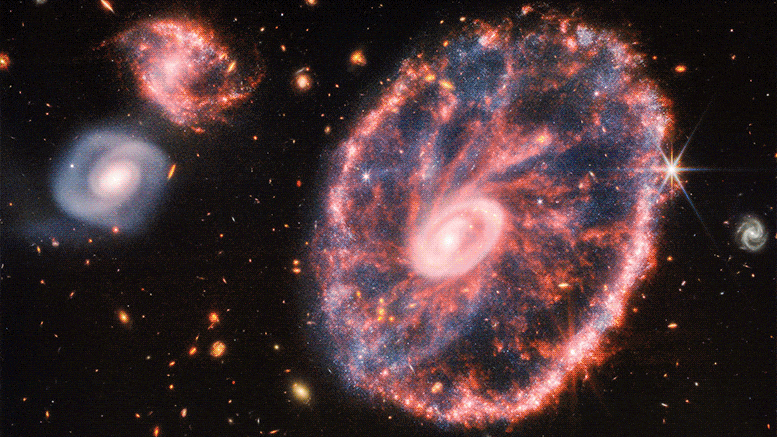
Previewing our Artemis I mission to the Moon …
A new image from our James Webb Space Telescope …
And an anniversary for one of our explorers on Mars … a few of the stories to tell you about – This Week at NASA!
NASA Previews Artemis I Moon Mission
We previewed our uncrewed Artemis I mission to the Moon during a pair of briefings. On August 3, agency officials at our NASA Headquarters and at other NASA centers provided a “big picture overview” of the mission.
“Artemis I shows that we can do big things. Things that unite people, things that benefit humanity. Things like Apollo that inspire the world.” — Bill Nelson, NASA Administrator
That was followed two days later with a deeper dive into the mission’s timeline and operations from our Johnson Space Center. The agency is currently targeting no earlier than Monday, August 29, for the launch of the Space Launch System rocket to send the Orion spacecraft around the Moon and back to Earth. Artemis I will take place over the course of about six weeks to check out systems before astronauts fly aboard the spacecraft on Artemis II.
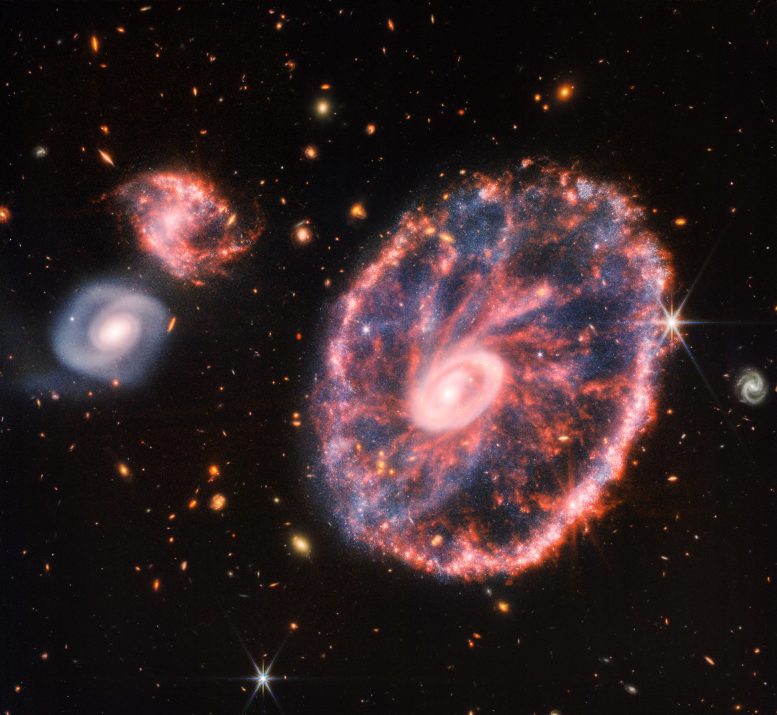
This image of the Cartwheel and its companion galaxies is a composite from Webb’s Near-Infrared Camera (NIRCam) and Mid-Infrared Instrument (MIRI), which reveals details that are difficult to see in the individual images alone.
This galaxy formed as the result of a high-speed collision that occurred about 400 million years ago. The Cartwheel is composed of two rings, a bright inner ring, and a colorful outer ring. Both rings expand outward from the center of the collision like shockwaves. Credit: NASA, ESA, CSA, STScI, Webb ERO Production Team
Webb Captures New Image of the Cartwheel Galaxy
NASA’s James Webb Space Telescope produced this new detailed image of the Cartwheel Galaxy and two smaller galaxies. The Cartwheel Galaxy, which is located about 500 million light-years from us, is a rare type of galaxy that astronomers call a “ring galaxy.” It is believed that the Cartwheel Galaxy used to be a normal spiral galaxy like our Milky Way before a collision with another galaxy affected the Cartwheel Galaxy’s shape and structure.
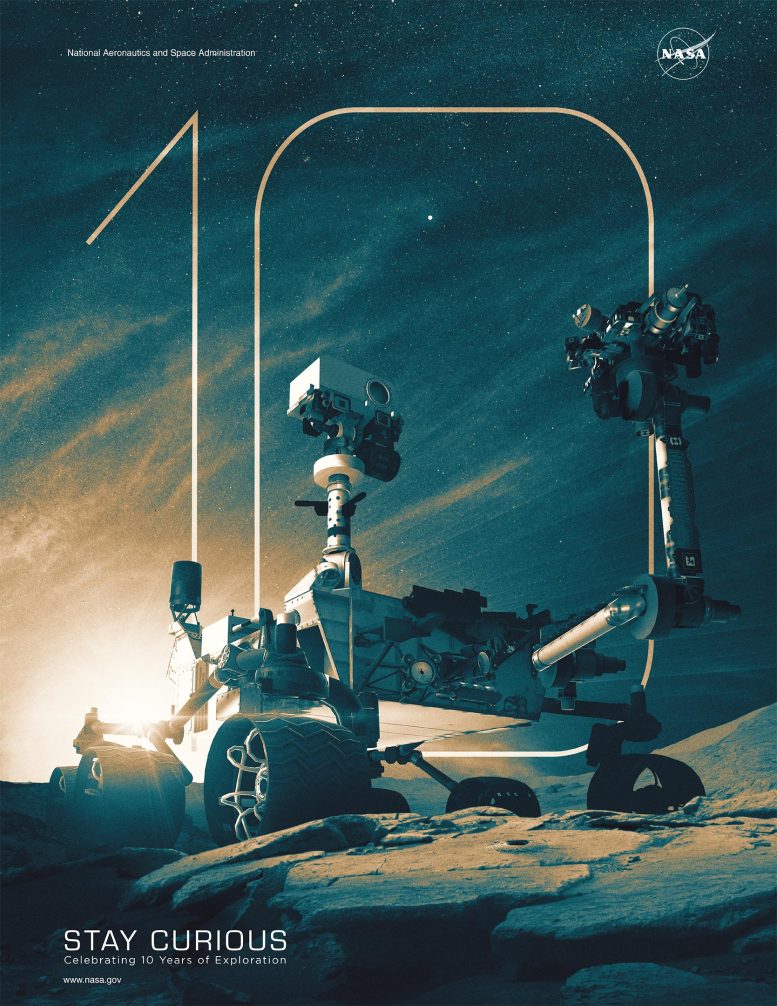
Stay curious with NASA and celebrate the agency’s Curiosity Mars rover’s 10th anniversary on the Red Planet with a two-sided poster that lists some of the intrepid explorer’s inspiring accomplishments. Credit: NASA/JPL-Caltech
After 10 years on Mars, Curiosity Still Has Drive
NASA’s Curiosity rover is celebrating 10 years on Mars. The rover landed on the Red Planet at 10:32 p.m. PDT on August 5, 2012. Since then, it has driven about 18 miles and climbed more than 2,000 feet while exploring Gale Crater and the foothills of Mount Sharp. Most importantly, Curiosity determined that liquid water and the chemical building blocks needed for life were indeed present in this region of Mars for at least tens of millions of years. The Curiosity team now plans to have the rover spend the next few years exploring a new region, one thought to have formed as water was drying out, leaving behind salty minerals called sulfates.

A collage of NASA’s SpaceX Crew-5 from left to right, top to bottom: NASA astronauts Nicole Mann and Josh Cassada, JAXA (Japan Aerospace Exploration Agency) astronaut Koichi Wakata, and Roscosmos cosmonaut Anna Kikina. Credit: NASA
The Next Commercial Crew Launch to the Space Station
The launch of our SpaceX Crew-5 mission to the International Space Station is currently targeted for no earlier than September 29 from our Kennedy Space Center. NASA astronauts Nicole Mann and Josh Cassada, Japan Aerospace Exploration Agency astronaut Koichi Wakata, and Roscosmos cosmonaut Anna Kikina discussed their upcoming mission during an August 4 briefing at our Johnson Space Center.
“We are coming together as a human race. And our mission onboard the International Space Station of developing this technology and research to benefit all of humankind is really what brings us together.” — Nicole Mann, NASA Astronaut
This is NASA’s fifth crew rotation flight to the space station with a U.S. commercial spacecraft.
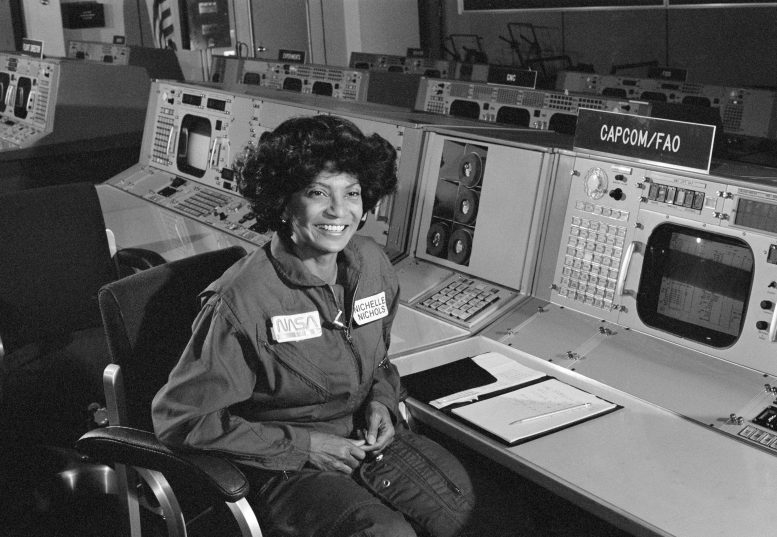
Actor Nichelle Nichols, who died July 30, 2022, didn’t just break new ground on “Star Trek” by playing one of the first leading recurring Black female characters on U.S. television. A decade after the show ended, she did the same for NASA, appearing in a promotional film aimed at recruiting women and people of color to apply to be astronauts, as she recounted in a 2012 visit to NASA’s Goddard Space Flight Center. The next astronaut class, appointed in 1978, included Guy Bluford, the first Black American in space, and Sally Ride, the first American woman in space. Credit: NASA
NASA Pays Tribute to Nichelle Nichols
NASA is remembering actor Nichelle Nichols, who passed away on July 30. She broke new ground on “Star Trek” in her role as Lieutenant Uhura, one of the first leading recurring Black female characters on U.S. television. Years later, NASA officials enlisted her help to recruit the first women and minority astronauts for the Space Shuttle Program. In a statement, NASA Administrator Bill Nelson noted that as we prepare to send the first woman and first person of color to the Moon under Artemis, NASA is guided by the legacy of Nichelle Nichols.
That’s what’s up this week @NASA


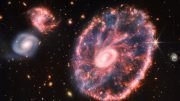




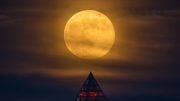

Much appreciation. I loved it!!! 3 exclamations means my son Wyatt and Mick love you. Everybody loves led Zeppelin.
Peace and love marcy
The earth is rotating faster is probably because the scientists used the Large Hadron Collider in other country. Maybe research on that. Just a two cents thought.
Aimed at recruiting women and people of color. Watch out some may try to say that is racist. Their are people that are looking a reason to be Offended. Unfortunately we are becoming the nation of the offended
I love you, NASA ❤
Mars, from what we can see of it, appears to be stunningly beautiful. I’m sure that many of us would like to see more of it,unobscured by the rover’s shadow. That said, congratulations on this incredible mission from an old big fan.